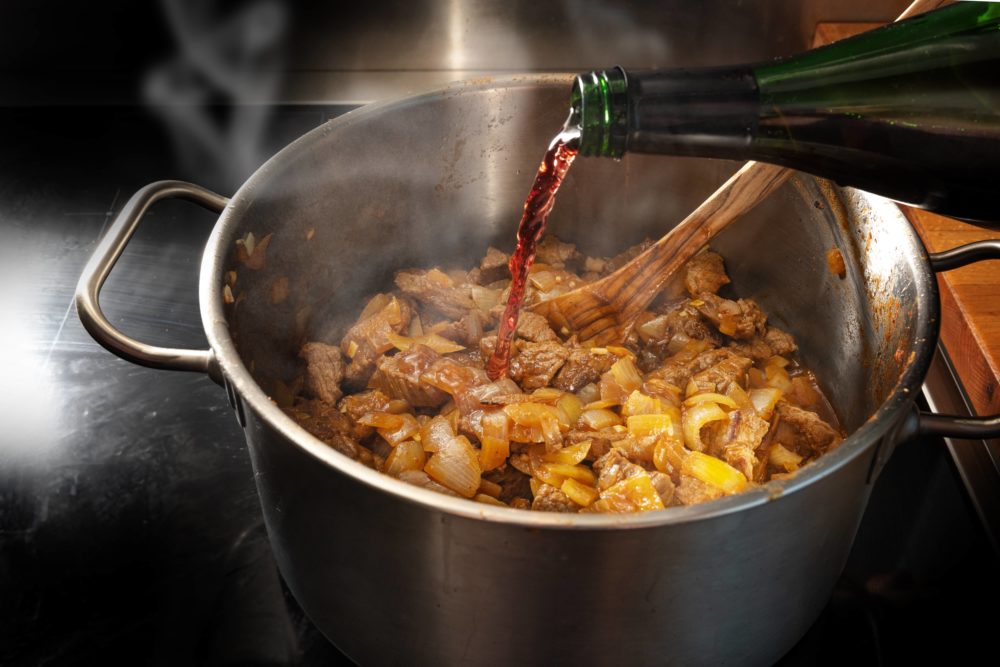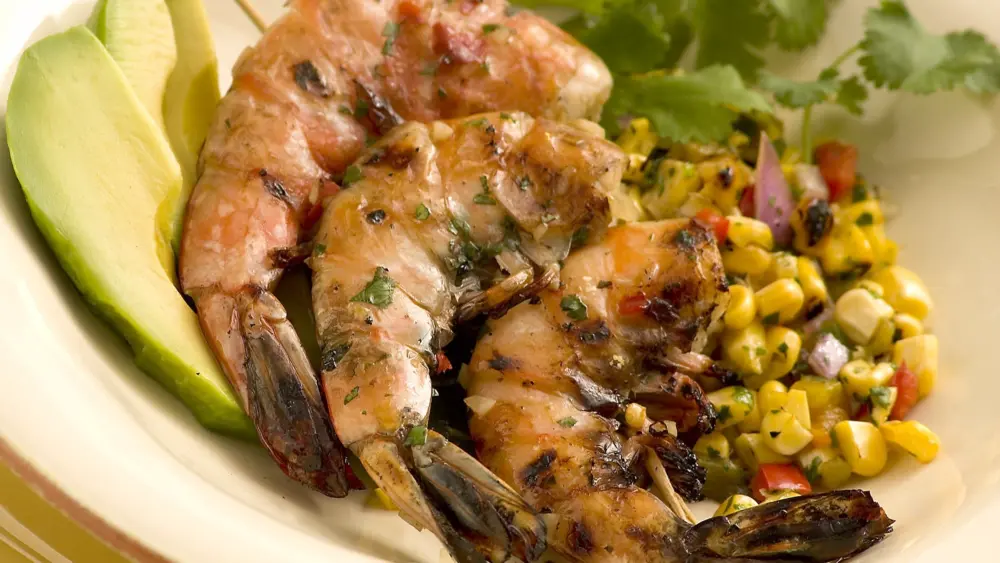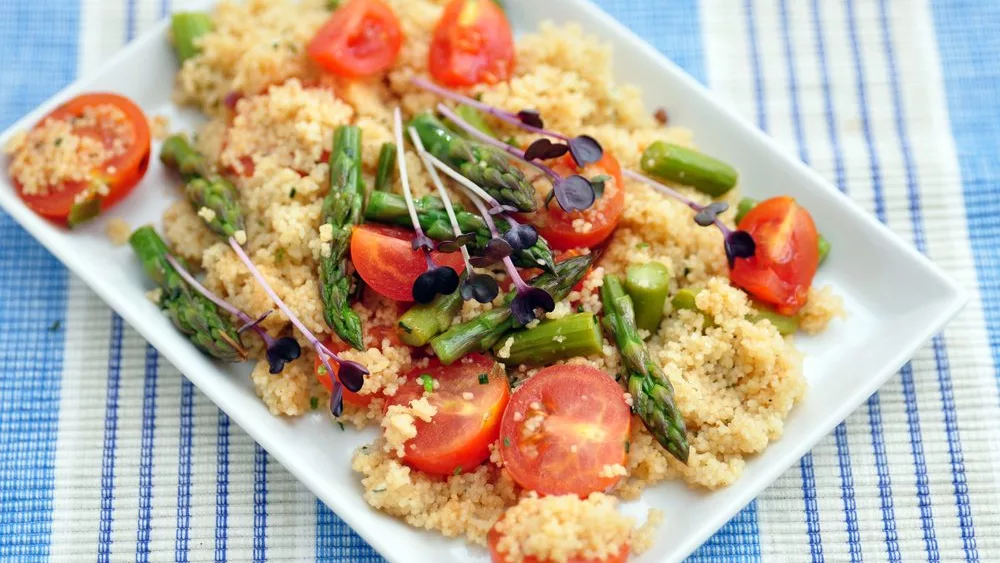
Most cooks will tell you that adding wine to sauces, marinades, risottos, braises, ragus, broths, the stuck-on browned bits in a sauté pan and many other foods enhances flavor. If you ask why, they may tell you that the wine’s fruity character or its crisp acidity adds depth and sparkle to a dish. But there’s more to wine than just fruit and acidity. As a cooking agent, wine and other alcoholic beverages work a lot harder than you may think, thanks to alcohol’s amazing ability to extract flavors that would otherwise remain trapped in food.
To start with, wine has its own wonderful flavors from the grapes as well as fermentation. During fermentation of grape juice, large, bland molecules break down into smaller, more flavorful compounds, producing dramatic changes in flavor. Enzymes break big carbohydrates into sugars. Then yeast and other microorganisms ingest these sugars, plus sugars already present in the grape juice, and give off carbon dioxide, alcohol and all sorts of flavorful byproducts, from organic acids like acetic acid and lactic acid to amino acids. The acidity causes more molecular breakdowns, until eventually the amount of alcohol in the wine reduces the activity of the microorganisms. At some point, the winemaker decides that the wine has the desired flavors, and it’s bottled. Whether you’re drinking it or cooking with it, wine offers a complex mixture of flavorful compounds.
The alcohol in wine plays an important role. Some flavor components in foods dissolve in water, and some dissolve in fat. One of the reasons that fat-free foods often taste so boring is that the fat-soluble flavors in the dish remain locked in the food. Even a tiny bit of fat can dissolve and carry flavors, making a dish much more flavorful than if it were totally fat-free. Alcohol, be it in wine, beer, or hard liquor like vodka and bourbon, is a powerful flavor extractor, too. It dissolves not only water and fat-soluble flavors, but also flavor components that neither water nor fat can dissolve. For example, we use alcohol to extract flavor from vanilla beans, and the reward is vanilla extract. This ability of alcohol to extract and carry flavors makes it a great asset for cooks. When you splash a few tablespoons of wine into a skillet that was used to sauté meat or vegetables, you usually scrape up the stuck-on bits of food so they’ll dissolve in the wine. By doing this, you’re not only getting the flavors of the wine and of the caramelized browned bits in your dish, you’re also getting some extra flavors that only alcohol can extract.
This may be why vodka, which is relatively weak on flavor but high in alcohol, makes an occasional appearance in sauces. Why would a tomato sauce spiked with vodka have so much more flavor, even though the sauce simmers long enough to boil off most of the alcohol? There must be a key flavor component in tomatoes that dissolves in alcohol. Once the alcohol dissolves that flavor component and releases it into the sauce, its job is done, so it doesn’t matter that most of it boils off.
Does all the alcohol evaporate when you cook with it? Alcohol boils at a lower temperature than water, so you’d think that the alcohol would completely evaporate before the water, but this doesn’t happen. Some of the alcohol and water combine to form an inseparable mixture called an azeotrope. So even after lengthy boiling, some alcohol remains bound with water. Not surprisingly, the cooking method and cooking time also influence how much alcohol evaporates. Flambéing removes about 25 percent of the original alcohol. Simmering on the stovetop for 30 minutes evaporates about 65 percent of the alcohol. And two-and-a-half hours of simmering removes about 95 percent of the alcohol.
Cooking without wine
Is there a substitute for wine in recipes? To replace the flavor of the wine itself, you can use a little fruit juice or verjus (unfermented and unripe grape juice) but without the alcohol to do its flavor-extraction magic, you won’t get as much complexity. To draw out as much flavor as possible without the alcohol, include a little water and fat to dissolve and carry both the water and fat soluble flavors. You can also boost flavor with ingredients such as citrus zest, vinegar, fresh herbs, pepper and other spices. Wine does, however, make a unique contribution in cooking.



